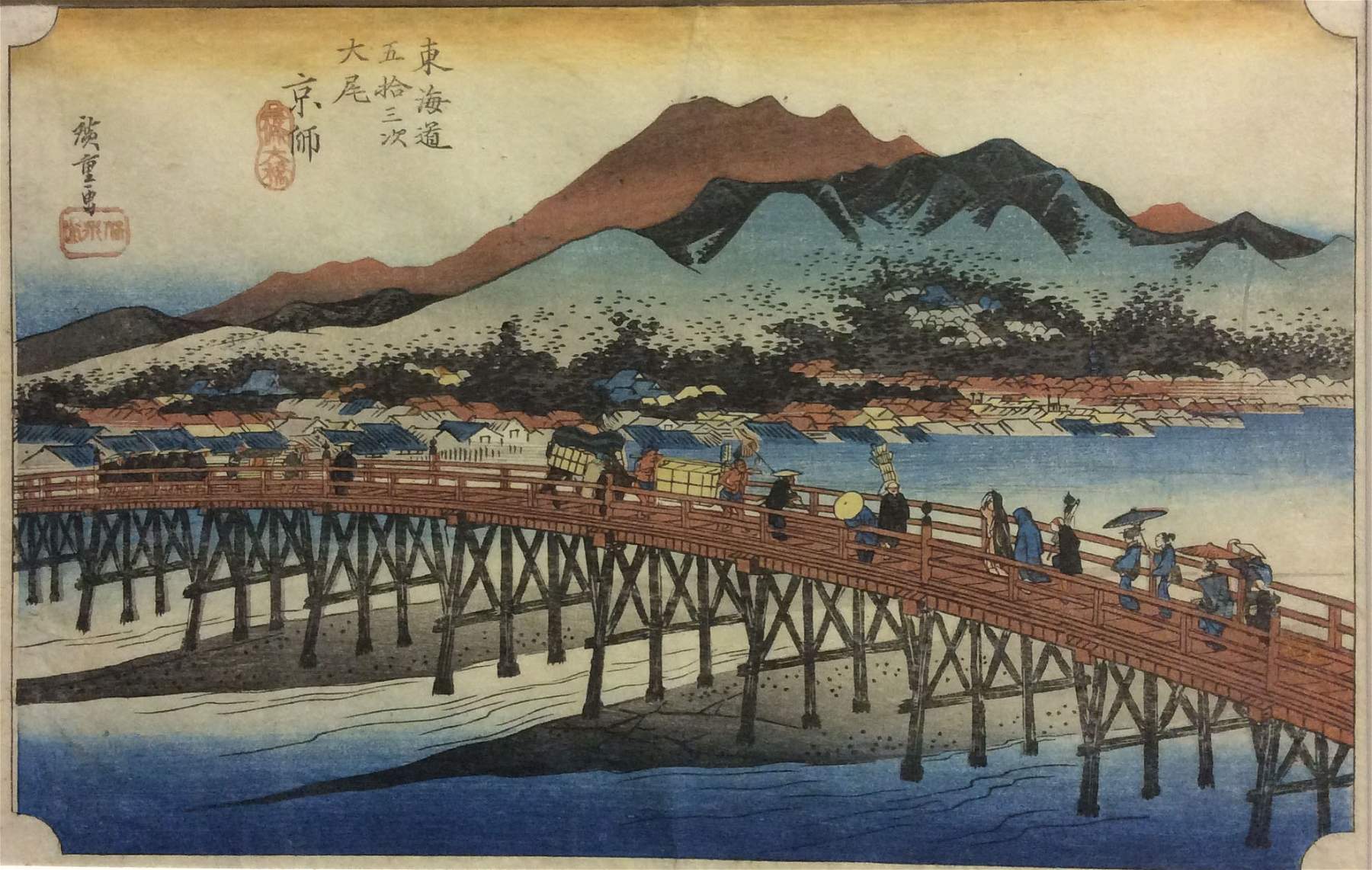From Hokusai to Hiroshige, in Pavia the masters of Japanese art compare with Gauguin, Manet and others
From October 12, 2019 to February 9, 2020, the Scuderie del Castello Visconteo in Pavia will host the exhibition Hokusai, Hiroshige, Utamaro. Masterpieces of Japanese Art, an exhibition that presents the public with more than one hundred and fifty works to witness the production of ukiyo-e prints and their influence on European art. In the exhibition, visitors will find works by masters such as Katsushika Hokusai (Edo, 1760 - 1849), Utagawa Hiroshige (Edo, 1797 - 1858) and Kitagawa Utamaro (?, 1753 - Edo, 1806) with those of European artists who were influenced by them, such as Édouard Manet, Henri de Toulouse-Lautrec, Pierre Bonnard, Paul Gauguin, Camille Pissarro and others.
The exhibition, promoted by the Municipality of Pavia - Culture, Tourism, Education, Youth Policies Sector, produced and organized by ViDi, in collaboration with Musei Civici di Pavia, is curated by Tara Weber(registrar of the Johannesburg Art Gallery), Laura Aldovini (conservator of the Musei Civici di Pavia) and Paolo Linetti (director of the Museo d’Arte Orientale Collezione Mazzocchi in Coccaglio). The aim of the exhibition is to show the wonders of ukiyo-e, or the refined color wood engravings developed in Japan from the 17th century onward, and to give an account of the profound influence they exerted on the history of European, especially French, art in the 19th century. The more than 150 works on display come from the Asian art collection of the Johannesburg Art Gallery, formed beginning in 1938, to which will be added about 30 prints owned by the Musei Civici di Pavia, dating from before 1858, and executed by four pupils of Utagawa Toyokuni (Edo, 1769 - 1825). It will also be possible to admire Hokusai’s celebrated Great Wave.
The ukiyo-e, literally “images of the floating world,” are the product of the cultural temperament that flourished in the cities of Edo (present-day Tokyo), Osaka and Kyoto, distinguished by an artistic technique used during the second half of the seventeenth century, beginning with the monochromatic works of Hishikawa Moronobu (Hodamura, 1618 - Edo, 1694), made with Chinese ink, then colored by hand with brushes. It was not until the 18th century that the polychromatic printing technique was developed, which decreed the success of these prints at home and in the West.
The tour explores the most recognizable themes of the ukiyo-e: it starts with an analysis of the history of Japanese printing, delving in particular into how the inclusion of a stylistic element such as color then evolved over the years to become an indispensable feature of the etchings. Masters of Landscape is the title of the section that brings together a number of works on naturalistic subjects by Hokusai and Hiroshige, to which many Western artists drew inspiration in proposing the image of Japan in the second half of the 19th century, and precedes the section devoted to nature, that is, the animals that populate it, from birds to fish. There will also be a section devoted to female beauty, the elegance of body shapes and rich costumes of women in Japanese society, contrasting with that of courtesans and life in the pleasure district. Notable among the various aspects of Japanese society of the time is a core of prints devoted to traditional Kabuki theater, a form of drama that brought to the stage themes ranging from the legendary to the supernatural, from historical-military events to episodes of contemporary life. This section includes the nucleus of the Pavia Civic Museums: in fact, the exhibition is also an opportunity to enhance the sheets from the bequest of Renato Soriga, former director of the Pavia museum until 1939, which thus enriched the museum’s already rich collection of prints, which originated from that of Marquis Luigi Malaspina di Sannazzaro (Pavia, 1754 - Milan, 1835).
European artists, especially French artists, were particularly impressed by ukiyo-e prints. Authors such as Manet, Toulouse-Lautrec, Gauguin and others discovered in Japanese woodcuts a freshness and simplicity of form and color that they had long sought to transform and revolutionize their mode of painting. The exhibition aims to document these aspects as well.
The Johannesburg Art Gallery’s collection, which as early as 1938 was considering developing a collection of art from Asian countries, has grown through both the donation and acquisition of some 200 Japanese prints. Since 1991, these prints have never been shown to the public in an exhibition of this magnitude.
The exhibition is accompanied by a Skira catalog. Hours: Tuesday through Friday from 10 a.m. to 1 p.m. and 2 to 6 p.m., Saturdays, Sundays and holidays from 10 a.m. to 7 p.m. The ticket office closes one hour earlier. Tickets (with audioguide included): full 12 euros, reduced 10 euros (for children 13 to 18 years old, over 65, preconstituted groups of adults of minimum 15 and maximum 30 people), reduced schools 5 euros (for children 7 to 12 years old). For info visit the Scuderie del Castello Visconteo website.
Pictured: Hiroshige, Ando Hiroshige, The Great Sanjo Bridge over the Sumida River, no. 55 in the series The Fifty-Three Stations of Tokaido (1833-1834; polychrome woodcut on mulberry paper, 262 x 383 m)
 |
| From Hokusai to Hiroshige, in Pavia the masters of Japanese art compare with Gauguin, Manet and others |
Warning: the translation into English of the original Italian article was created using automatic tools. We undertake to review all articles, but we do not guarantee the total absence of inaccuracies in the translation due to the program. You can find the original by clicking on the ITA button. If you find any mistake,please contact us.




























